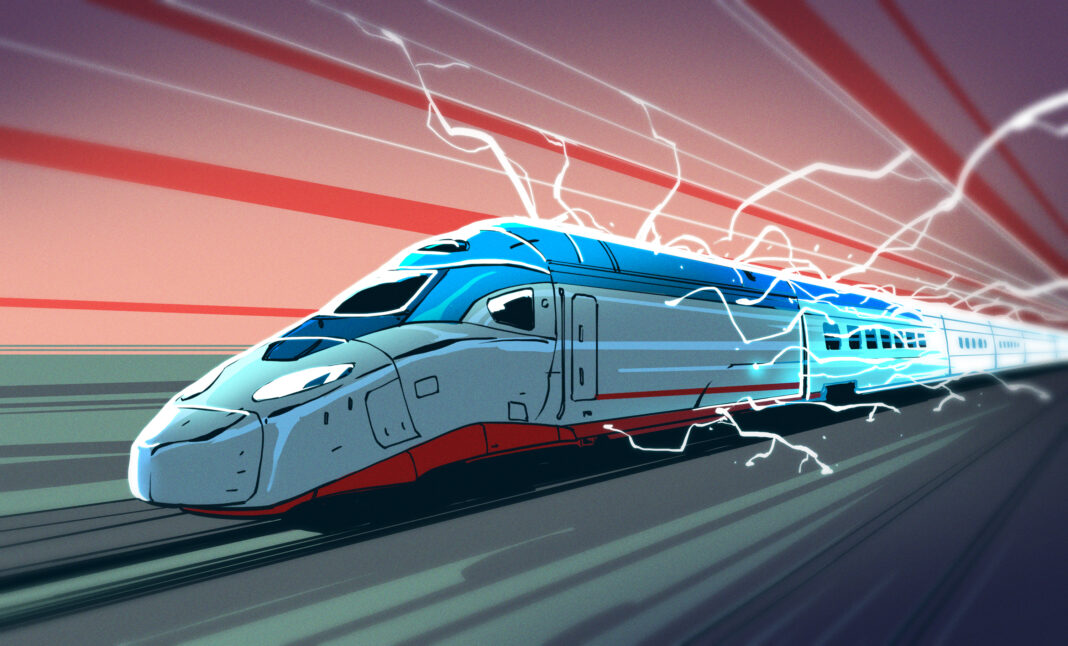The life of a Hackaday writer often involves hours spent at a computer searching for all the cool hacks you love, but its perks come in not being tied to an office, and in periodically traveling around our community’s spaces. This suits me perfectly, because as well as having an all-consuming interest in technology, I am a lifelong rail enthusiast. I am rarely without an Interrail pass, and for me Europe’s railways serve as both comfortable mobile office space and a relatively stress free way to cover distance compared to the hell of security theatre at the airport. Along the way I find myself looking at the infrastructure which passes my window, and I have become increasingly fascinated with the power systems behind electric railways. There are so many different voltage and distribution standards as you cross the continent, so just how are they all accommodated? This deserves a closer look.
So Many Different Ways To Power A Train
In Europe where this is being written, the majority of main line railways run on electric power, as do many subsidiary routes. It’s not universal, for example my stomping ground in north Oxfordshire is still served by diesel trains, but in most cases if you take a long train journey it will be powered by electricity. This is a trend reflected in many other countries with large railway networks, except sadly for the United States, which has electrified only a small proportion of its huge network.
Of those many distribution standards there are two main groups when it comes to trackside, those with an overhead wire from which the train takes its power by a pantograph on its roof, or those with a third rail on which the train uses a sliding contact shoe. It’s more usual to see third rails in use on suburban and metro services, but if you take a trip to Southern England you’ll find third rail electric long distance express services. There are even four-rail systems such as the London Underground, where the fourth rail serves as an insulated return conductor to prevent electrolytic corrosion in the cast-iron tunnel linings.
As if that wasn’t enough, we come to the different voltage standards. Those southern English trains run on 750 V DC while their overhead wire equivalents use 25 kV AC at 50Hz, but while Northern France also has 25 kV AC, the south of the country shares the same 3 kV DC standard as Belgium, and the Netherlands uses 1.5 kV DC. More unexpected still is Germany and most of Scandinavia, which uses 15 kV AC at only 16.7 Hz. This can have an effect on the trains themselves, for example Dutch trains are much slower than those of their neighbours because their lower voltage gives them less available energy for the same current.
In general these different standards came about partly on national lines, but also their adoption depends upon how late the country in question electrified their network. For example aside from that southern third-rail network and a few individual lines elsewhere, the UK trains remained largely steam-powered until the early 1960s. Thus its electrification scheme used the most advanced option, 25 kV 50 Hz overhead wire. By contrast countries such as Belgium and the Netherlands had committed to their DC electrification schemes early in the 20th century and had too large an installed base to change course. That’s not to say that it’s impossible to upgrade though, as for example in India where 25 kV AC electrification has proceeded since the late 1950s and has included the upgrade of an earlier 1.5 kV DC system.
A particularly fascinating consequence of this comes at the moment when trains cross between different networks. Sometimes this is done in a station when the train isn’t moving, for example at Ashford in the UK when high-speed services switch between 25 kV AC overhead wire and 750 V DC third rail, and in other cases it happens on the move through having the differing voltages separated by a neutral section of overhead cable. Sadly I have never manged to travel to the Belgian border and witness this happening. Modern electric locomotives are often equipped to run from multiple voltages and take such changes in their stride.
Power To The People Movers
Finally, all this rail electrification infrastructure needs to get its power from somewhere. In the early days of railway electrification this would inevitably been a dedicated railway owned power station, but now it is more likely to involve a grid connection and some form of rectifier in the case of DC lines. The exception to this are systems with differing AC frequencies from their grid such as the German network, which has an entirely separate power generation and high voltage distribution system.
So that was the accumulated observations of a wandering Hackaday scribe, from the comfort of her air-conditioned express train. If I had to name my favourite of all the networks I have mentioned it would be the London Underground, perhaps because the warm and familiar embrace of an Edwardian deep tube line on a cold evening is an evocative feeling for me. When you next get the chance to ride a train keep an eye out for the power infrastructure, and may the experience be as satisfying and comfortable as it so often is for me.
Header image: SPSmiler, Public domain.

